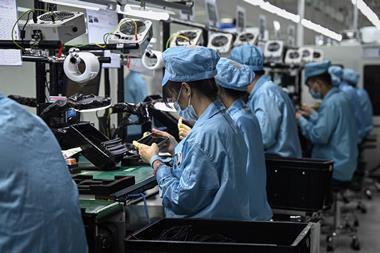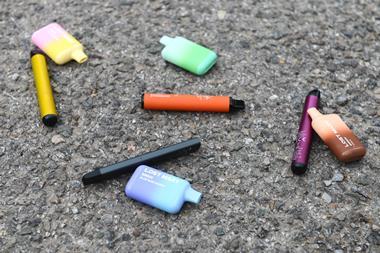How many gadgets do you have in your home? Not just the ones you’re using today but the forgotten phones, clapped-out laptops and dilapidated tablets that you’ve acquired over the years. I took stock yesterday: four mobiles, three laptops, two tablets and three digital cameras.
The Royal Society of Chemistry has published a study that suggests as many as 40 million unused gadgets lie strewn throughout UK households, with 45% of homes having up to five devices stashed away, and 82% of the 2353 people surveyed saying that had no plans to recycle any of them. I wouldn’t say I had made a decision to not (or never) recycle these devices. Nor am I among the 29% of people who didn’t know where or how to do so – there is a good recycling centre near where I live that accommodates electronics. I’ve become a frequent visitor as recently I mustered the courage to clear the garage roof space.
Instead, I’m aligned with the 69% of people who said they were keeping old devices as backups. However, after having a phone stolen at a conference several months ago, I bought a new one. The backup devices I’d been hoarding were disappointing once I’d dusted them off, found a charger and remembered how to use them – goes to show how quickly you accept and expect better performance, screen quality, ergonomics and so on. Recycling these old devices is something I should have done a long time ago.
We need action now … and we must enable a new generation of chemistry talent to help
Robert Parker, chief executive of the Royal Society of Chemistry
Electronic devices contain numerous elements of which supplies are running out – indium and tantalum mines for example are predicted to be exhausted within a century. The growing global rate of consumption, plus the usefulness of these metals in a range of technologies – transistors, solar panels, pacemakers, turbine blades – makes their recovery an urgent necessity. There are ethical as well as practical considerations too. ‘Conflict elements’ like gold, tin and tungsten are often fought over in areas where they are mined and child labour is a distressingly common facet of their extraction.
The problem is set to grow. Perhaps unsurprisingly, the highest proportion of the worst hoarders are the youngest generation. 52% of 16–24 year olds have 10 or more devices at home compared with 39% of 35–44 year olds and 30% of 55–75 year olds. If we don’t start influencing change now, this generational behaviour will lead to a rapidly increasing pile of ‘e-waste’.
At the core of this change is establishing and adopting cultures and processes (at an individual, neighbourhood, national and global level) that take account of the entire product lifecycle: manufacturers, retailers, consumers, regulators and governments all have a role to play. In response to the study, Robert Parker, chief executive of the Royal Society of Chemistry said ‘We need action now … and we must enable a new generation of chemistry talent to help. The UK has a tremendous opportunity to become a world leader in this and set an example for other nations to follow.’
He is absolutely right. Chemical scientists are uniquely placed to deliver longer term solutions by finding alternative materials and improving methods to extract and recycle these rare elements. And the UK has already shown it has the vision and capability to develop the technologies and methods necessary. According to the Electrical Waste Recycling Group, a collection of recycling businesses formed in 2008, we already recycle about half a million tonnes of electric waste in the UK. But, as the study shows, that is probably only a small proportion of the electronic waste that’s either going to landfill or stashed in our cupboards and drawers.
In the closing months of the International Year of the Periodic Table, there is no better time to be raising awareness of element scarcity and advocating the role of chemistry to identify solutions. To get involved visit the Royal Society of Chemistry website. And go recycle those old phones, you’ll never want to use them again.












No comments yet